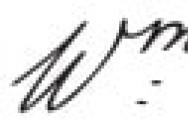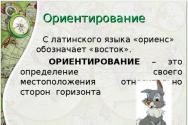Hovsepyan history of journalism. Book: “history of the modern fatherland. journalism. Approximate word search
Hovsepyan R.P. History of modern domestic journalism (February 1917 - early 90s). - M.: Moscow State University Publishing House, 1999. - 304 p.
Abstract: The manual examines the most important features of the functioning of domestic journalism in the conditions of the multi-party system of the Soviet state and the beginning of democratic reforms during the transition period. The purpose of the manual is to understand the role of the media in the diverse processes of the socio-political and economic life of the country at various stages of its history.
For students of university journalism faculties and departments.
INTRODUCTION
CHAPTER 1. PRESS OF RUSSIA AFTER THE FEBRUARY BOURGEOIS-DEMOCRATIC REVOLUTION
Russian periodicals at the beginning of the 20th century
The February Revolution and the development of the press in Russia
Journalism in the political struggle of opposing sides
Print after the July events
CHAPTER 2. JOURNALISM OF THE FIRST DECADE OF SOVIET POWER (November 1917 - 1927)
Establishment of one-party Soviet journalism during the years of the civil war and foreign military intervention (July 1918–1920)
Domestic journalism during the period of liberalization of the Soviet regime (1921–1927)
CHAPTER 3. DOMESTIC JOURNALISM in the late 20s and 30s.
Development of the media structure
Journalism as a means of ideological and organizational support for the Bolshevik concept of socialist construction
Domestic journalism of the 30s.
CHAPTER 4. JOURNALISM ON THE EVE AND DURING THE GREAT PATRIOTIC WAR (1939–1945)
Soviet journalism in the pre-war years. Print and radio in the conditions of the Great Patriotic War
The main problems of the speeches of the Soviet press during the war years
Journalism during the Great Patriotic War
CHAPTER 5. JOURNALISM OF THE POST-WAR DECADE (1946-1956)
Development of the media system in the post-war years
The topic of restoration and further development of the national economy in the Soviet press
The topic of economic recovery and development in the press of the post-war years
CHAPTER 6. PRINT, TELEVISION AND RADIO OF THE SECOND HALF OF THE 50'S - MID 80'S.
Further development of the media structure
The topic of economic reform in the press
Journalism in captivity of voluntarism and relapses of the cult of personality
CHAPTER 7. MASS MEDIA OF THE SECOND HALF OF THE 80'S – EARLY 90'S.
Mass media in conditions of democratization and glasnost
Revival of the multi-party press in the country
Journalism and new political thinking
CHAPTER 8. JOURNALISM OF THE RUSSIAN FEDERATION (90s)
The Russian media system in the first half of the 90s.
Structure of the periodical press of the Russian Federation
Television broadcasting
Broadcasting
News agencies
Book publishers
Regional journalism
Journalism in the market conditions
Leading topics in the Russian media
Journalism of the Russian Federation and power structures
Russian Press on the Internet
INTRODUCTION
The history of modern domestic journalism at all stages of its journey is complex and contradictory. The essence of journalism is determined not by the sum of published publications and publications, different in nature and content, but by a dynamic, diverse process in which the publication, the publicist and society are in a very complex relationship, in constant movement and development.
The history of the mass media (media) was formed under the influence of numerous not only objective, but also subjective factors that influenced the content and nature of all its structural links. For decades, historical science, including historical and journalistic science, was under authoritarian pressure. She performed apologetic functions, depriving herself of the scientific principles of historicism, objectivity, and truthfulness. The historical and journalistic literature kept silent about everything that could cast a shadow on the “infallibility” of the party and its leaders, and sow doubt about the absolute correctness of their line.
Many works have been devoted to the construction of the Soviet press and its participation in the socio-political transformations of our society. Among them are “The Party and Soviet Press in the Struggle for the Construction of Socialism and Communism,” which was published in two editions in 1961 and 1966, “Print and the Construction of Communism” (M., 1969), “Soviet Journalism and the Communist Education of Working People” (M. ., 1979), “Multinational Soviet Journalism” (M., 1975). A prominent place in the historiography of modern domestic journalism was occupied by the works of: T. Antropov. The newspaper “Pravda” in the struggle for the victory of the October Revolution (M., 1954); R. Ivanova. Party-Soviet press during the years of extensive construction of socialism (1929–1937) (Moscow, 1977); I. Kuznetsov. Party and Soviet press during the years of socialist industrialization of the country (M., 1974); S. Matvienko. Party and Soviet press as a tool of socialist construction (1926–1932) (Alma-Ata, 1975); A. Mishuris. Print, born of October (M., 1968), etc. However, carrying rich factual material, these books are mostly written from the positions established in historical science of the “Short Course in the History of the All-Union Communist Party (Bolsheviks)”, directive documents of the CPSU and do not reflect today the realities of modern historical science.
The authors of many studies were deprived of access to even complete sets of newspapers, not to mention archival materials. The objective living conditions of Soviet society deprived them of the opportunity to recreate a true picture of the historical development of domestic journalism.
Books and studies were silent that the bourgeois-democratic state that arose for the first time in the history of Russia in February 1917 proclaimed freedom of speech, press and other manifestations of democracy. The new prospects provided an opportunity for the socialist parties of Russia to legalize their activities and begin organizing their network of periodicals.
It is necessary to restore the truth about the process of formation of the latest domestic journalism in the conditions of the multi-party system that took place after the victory of the October Revolution in young Soviet Russia.
Until recently, ideas about the activities of the Russian press in the first decade of Soviet power were fragmentary. It was not considered in the context of the socio-economic policy and military-communist ideology pursued at that time; it was hidden that even after the victory of the October Revolution, the administrative apparatus of the Provisional Government continued to operate, helping the Soviet government to avoid anarchy and paralysis in governing the country, which forced surplus appropriation led to a serious change in the principles of distribution, naturalization of wages, equalization. The principles of "war communism", propagated by the press, were presented as a definite plan for an accelerated transition to communist production and distribution. Blindly promoting Stalinism as the highest achievement of Marxist theoretical thought, it justified repression against those suspected of apostasy and accused of treason to the cause of communist construction. An in-depth understanding of the historical processes that actually took place helps to understand the role that the press played in the exceptionally rapid formation of the military-communist ideology, which had a detrimental impact on the forms and methods of governing the country over all subsequent decades.
The restructuring of political consciousness began with the report of N.S. Khrushchev at the 20th Congress of the CPSU, held in 1956, “On the cult of personality and its consequences.” However, the “thaw” period turned out to be short-lived. Analysis of the press of the late 60s and 70s. is increasingly asserting the idea that the coming to leadership of the country by L.I. Brezhnev led to a toughening of the political climate and intolerance of the authorities towards manifestations of free thought. Journalism moved away from a real assessment of the emerging socio-political contradictions.
1985 brought complex and still unresolved problems to Soviet society. Journalism, in the conditions of democratization of social life, glasnost, which opened the door to a little-known past, acquired new qualities and opportunities. The revival of a multi-party press has become a reality. Under the influence of democratization and openness in publications published after 1985, many secrets became apparent. The possibility of an objective assessment of the past has made it possible to make available to historical and historical-journalistic science what was previously kept silent or distorted.
Collections of journalistic materials contain a lot of new and instructive materials: “If according to conscience” (1988), “No other way is given” (1988), “Returned names”, in two books. (1989), “Pages of the history of the CPSU. Data. Problems. Lessons" (1988), "They Were Not Silent" (1989), "Our Fatherland. The Experience of Political History”, in two volumes (1991), N. Werth’s book “History of the Soviet State: 1900–1991” (1995), textbook “History of Contemporary Russian Journalism. February 1917 - early 90s" (1996), "Journalism of the late 20th century: lessons and prospects" (1998), etc.
The historiography of domestic journalism in a democratically oriented society is just taking shape. And yet, in recent years, many works have been published, the authors of which give an objective picture of the processes that took place in the 90s. in mass media. We are talking, in particular, about the books: “The Russian Mass Media System” (1994), “Moral Principles of Television Journalism (Experience of a Code of Ethics)” (1994), “History of Contemporary Russian Journalism. Transition period (mid-80s - 90s)" (1996), "Five years of press freedom" (1996), "Mass information: production strategy and consumption tactics" (1996), "Judicial reform: problems of analysis and coverage . Discussions about legal journalism" (1996), "Media: systemic characteristics" (1996), "Journalism in transition: problems and prospects" (1996), etc.
Rethinking a number of problems in the history of modern Russian journalism has necessitated overcoming the elements of a dogmatic approach to considering the nature and content of the Soviet press at all stages of its activity. A decisive rejection of the subjectivist interpretations of the processes of formation and development of modern domestic journalism that have prevailed in historical and journalistic science opens up new horizons on this path.
A new reading and understanding of many documents and facts, an unbiased analysis of a newspaper sheet made it possible to return undeservedly forgotten names of publicists to domestic journalism, to get acquainted with their activities and literary skills. In the history of modern domestic journalism, the editorial and journalistic activities of N. Berdyaev, N. Bukharin, G. Plekhanov, P. Struve, N. Ustryalov, L. Trotsky, V. Chernov, M. Zoshchenko, K. Radek, P. Miliukov and other political figures and writers.
Hovsepyan R.P. History of modern domestic journalism (February 1917 - early 90s). - M.: Moscow State University Publishing House, 1999. - 304 p.
Abstract: The manual examines the most important features of the functioning of domestic journalism in the conditions of the multi-party system of the Soviet state and the beginning of democratic reforms during the transition period. The purpose of the manual is to understand the role of the media in the diverse processes of the socio-political and economic life of the country at various stages of its history.
For students of university journalism faculties and departments.
INTRODUCTION
CHAPTER 1. PRESS OF RUSSIA AFTER THE FEBRUARY BOURGEOIS-DEMOCRATIC REVOLUTION
Russian periodicals at the beginning of the 20th century
The February Revolution and the development of the press in Russia
Journalism in the political struggle of opposing sides
Print after the July events
CHAPTER 2. JOURNALISM OF THE FIRST DECADE OF SOVIET POWER (November 1917 - 1927)
Establishment of one-party Soviet journalism during the years of the civil war and foreign military intervention (July 1918–1920)
Domestic journalism during the period of liberalization of the Soviet regime (1921–1927)
CHAPTER 3. DOMESTIC JOURNALISM in the late 20s and 30s.
Development of the media structure
Journalism as a means of ideological and organizational support for the Bolshevik concept of socialist construction
Domestic journalism of the 30s.
CHAPTER 4. JOURNALISM ON THE EVE AND DURING THE GREAT PATRIOTIC WAR (1939–1945)
Soviet journalism in the pre-war years. Print and radio in the conditions of the Great Patriotic War
The main problems of the speeches of the Soviet press during the war years
Journalism during the Great Patriotic War
CHAPTER 5. JOURNALISM OF THE POST-WAR DECADE (1946-1956)
Development of the media system in the post-war years
The topic of restoration and further development of the national economy in the Soviet press
The topic of economic recovery and development in the press of the post-war years
CHAPTER 6. PRINT, TELEVISION AND RADIO OF THE SECOND HALF OF THE 50'S - MID 80'S.
Further development of the media structure
The topic of economic reform in the press
Journalism in captivity of voluntarism and relapses of the cult of personality
CHAPTER 7. MASS MEDIA OF THE SECOND HALF OF THE 80'S – EARLY 90'S.
Mass media in conditions of democratization and glasnost
Revival of the multi-party press in the country
Journalism and new political thinking
CHAPTER 8. JOURNALISM OF THE RUSSIAN FEDERATION (90s)
The Russian media system in the first half of the 90s.
Structure of the periodical press of the Russian Federation
Television broadcasting
Broadcasting
News agencies
Book publishers
Regional journalism
Journalism in the market conditions
Leading topics in the Russian media
Journalism of the Russian Federation and power structures
Russian Press on the Internet
INTRODUCTION
The history of modern domestic journalism at all stages of its journey is complex and contradictory. The essence of journalism is determined not by the sum of published publications and publications, different in nature and content, but by a dynamic, diverse process in which the publication, the publicist and society are in a very complex relationship, in constant movement and development.
The history of the mass media (media) was formed under the influence of numerous not only objective, but also subjective factors that influenced the content and nature of all its structural links. For decades, historical science, including historical and journalistic science, was under authoritarian pressure. She performed apologetic functions, depriving herself of the scientific principles of historicism, objectivity, and truthfulness. The historical and journalistic literature kept silent about everything that could cast a shadow on the “infallibility” of the party and its leaders, and sow doubt about the absolute correctness of their line.
Many works have been devoted to the construction of the Soviet press and its participation in the socio-political transformations of our society. Among them are “The Party and Soviet Press in the Struggle for the Construction of Socialism and Communism,” which was published in two editions in 1961 and 1966, “Print and the Construction of Communism” (M., 1969), “Soviet Journalism and the Communist Education of Working People” (M. ., 1979), “Multinational Soviet Journalism” (M., 1975). A prominent place in the historiography of modern domestic journalism was occupied by the works of: T. Antropov. The newspaper “Pravda” in the struggle for the victory of the October Revolution (M., 1954); R. Ivanova. Party-Soviet press during the years of extensive construction of socialism (1929–1937) (Moscow, 1977); I. Kuznetsov. Party and Soviet press during the years of socialist industrialization of the country (M., 1974); S. Matvienko. Party and Soviet press as a tool of socialist construction (1926–1932) (Alma-Ata, 1975); A. Mishuris. Print, born of October (M., 1968), etc. However, carrying rich factual material, these books are mostly written from the positions established in historical science of the “Short Course in the History of the All-Union Communist Party (Bolsheviks)”, directive documents of the CPSU and do not reflect today the realities of modern historical science.
The authors of many studies were deprived of access to even complete sets of newspapers, not to mention archival materials. The objective living conditions of Soviet society deprived them of the opportunity to recreate a true picture of the historical development of domestic journalism.
Books and studies were silent that the bourgeois-democratic state that arose for the first time in the history of Russia in February 1917 proclaimed freedom of speech, press and other manifestations of democracy. The new prospects provided an opportunity for the socialist parties of Russia to legalize their activities and begin organizing their network of periodicals.
It is necessary to restore the truth about the process of formation of modern domestic journalism in the conditions of the multi-party system that took place after the victory of the October Revolution in young Soviet Russia.
Until recently, ideas about the activities of the Russian press in the first decade of Soviet power were fragmentary. It was not considered in the context of the socio-economic policy and military-communist ideology pursued at that time; it was hidden that even after the victory of the October Revolution, the administrative apparatus of the Provisional Government continued to operate, helping the Soviet government to avoid anarchy and paralysis in governing the country, which forced surplus appropriation led to a serious change in the principles of distribution, naturalization of wages, equalization. The principles of "war communism", propagated by the press, were presented as a definite plan for an accelerated transition to communist production and distribution. Blindly promoting Stalinism as the highest achievement of Marxist theoretical thought, it justified repression against those suspected of apostasy and accused of treason to the cause of communist construction. An in-depth understanding of the historical processes that actually took place helps to understand the role that the press played in the exceptionally rapid formation of the military-communist ideology, which had a detrimental impact on the forms and methods of governing the country over all subsequent decades.
The restructuring of political consciousness began with the report of N.S. Khrushchev at the 20th Congress of the CPSU, held in 1956, “On the cult of personality and its consequences.” However, the “thaw” period turned out to be short-lived. Analysis of the press of the late 60s and 70s. is increasingly asserting the idea that the coming to leadership of the country by L.I. Brezhnev led to a toughening of the political climate and intolerance of the authorities towards manifestations of free thought. Journalism moved away from a real assessment of the emerging socio-political contradictions.
1985 brought complex and still unresolved problems to Soviet society. Journalism, in the conditions of democratization of social life, glasnost, which opened the door to a little-known past, acquired new qualities and opportunities. The revival of a multi-party press has become a reality. Under the influence of democratization and openness in publications published after 1985, many secrets became apparent. The possibility of an objective assessment of the past has made it possible to make available to historical and historical-journalistic science what was previously kept silent or distorted.
Collections of journalistic materials contain a lot of new and instructive materials: “If according to conscience” (1988), “No other way is given” (1988), “Returned names”, in two books. (1989), “Pages of the history of the CPSU. Data. Problems. Lessons" (1988), "They Were Not Silent" (1989), "Our Fatherland. The Experience of Political History”, in two volumes (1991), N. Werth’s book “History of the Soviet State: 1900–1991” (1995), textbook “History of Contemporary Russian Journalism. February 1917 - early 90s" (1996), "Journalism of the late 20th century: lessons and prospects" (1998), etc.
The historiography of domestic journalism in a democratically oriented society is just taking shape. And yet, in recent years, many works have been published, the authors of which give an objective picture of the processes that took place in the 90s. in mass media. We are talking, in particular, about the books: “The Russian Mass Media System” (1994), “Moral Principles of Television Journalism (Experience of a Code of Ethics)” (1994), “History of Contemporary Russian Journalism. Transition period (mid-80s - 90s)" (1996), "Five years of press freedom" (1996), "Mass information: production strategy and consumption tactics" (1996), "Judicial reform: problems of analysis and coverage . Discussions about legal journalism" (1996), "Media: systemic characteristics" (1996), "Journalism in transition: problems and prospects" (1996), etc.
Rethinking a number of problems in the history of modern Russian journalism has necessitated overcoming the elements of a dogmatic approach to considering the nature and content of the Soviet press at all stages of its activity. A decisive rejection of the subjectivist interpretations of the processes of formation and development of modern domestic journalism that have prevailed in historical and journalistic science opens up new horizons on this path.
A new reading and understanding of many documents and facts, an unbiased analysis of a newspaper sheet made it possible to return undeservedly forgotten names of publicists to domestic journalism, to get acquainted with their activities and literary skills. In the history of modern domestic journalism, the editorial and journalistic activities of N. Berdyaev, N. Bukharin, G. Plekhanov, P. Struve, N. Ustryalov, L. Trotsky, V. Chernov, M. Zoshchenko, K. Radek, P. Miliukov and other political figures and writers.
Journalism of the 20th century is traditionally divided into 8 stages. The period we are considering - the 80s - covers two of them at once. The turning point, both in the history of the country and in the history of journalism of the Soviet era, was April 1985, when M.S. Gorbachev, who came to power, completely changed the course of the further development of the country. Therefore, an excursion into the history of the period of interest to us should also be divided into stages “before” and “after”.
Journalism of the pre-perestroika period was exclusively propaganda in nature. The fact that the CPSU Central Committee recognized Soviet journalists as the main “assistants” of the party speaks for itself. Such a flattering statement was made in honor of the creation of the Union of Journalists of the USSR in 1959. From the late 60s to the mid-80s, there were only four congresses of the Union, which “moved away from those realities of life that remained outside the field of view of the media and contributed to the rapid flourishing of stagnation” R.O. Hovsepyan “History of modern domestic journalism. February 1917 - beginning of the 21st century."
Particular attention was paid to the role of the USSR victory in the Great Patriotic War; all dates related to the course of the war were excessively widely covered in all media. The exaggeration of the role of first N. Khrushchev and then L. Brezhnev in achieving victories on the fronts of the Second World War remained constant. In other words, while creating an ideal picture of life in the country, journalists kept silent only about the tragic and controversial moments of its history.
The media coverage of the international mission of Soviet troops in Afghanistan is also interesting. From the pages of newspapers, people learned about the glorious mission of helping the fraternal people. The television showed exciting reports from Alexander Kaverznev from Afghanistan. Information that in fact Soviet soldiers got involved in an armed struggle with the Mujahideen was simply not provided.
The media kept in the minds of citizens a picture of a calm life in the country. As researcher Strovsky writes: “In the late 70s - mid-80s. Soviet journalism is characterized by pomposity, false pathos, unbridled glorification, a clear desire to pass off wishful thinking, and avoidance of the real problems put forward by life.”
The period before the 70-80s was also marked by an unprecedented increase in the number of publications and their circulation. A large number of completely new publications with various topics have appeared. Journalism historian R.O. Hovsepyan provides the following statistical data. “In 1985, Ogonyok had a circulation of 1.5 million copies, in 1990 - 4 million, New World - 425 thousand and 2.7 million, Znamya -177 thousand and 900 thousand .ex. The largest circulations continued to be those of the magazines “Rabotnitsa” (20.5 million), “Peasant Woman” (20.3 million), and “Health” (25.5 million copies). R.O. Hovsepyan “History of modern domestic journalism. February 1917 - beginning of the 21st century"
This growth in print journalism has brought the country closer to the position of the most reading country in the world. By 1985, in terms of the number of newspapers per thousand people, only Japan was ahead of the USSR.
By the end of the 70s and beginning of the 80s, the role of TASS increased even more. Due to government funding, its complete technical re-equipment took place, and the network of correspondents expanded. Its own correspondents now worked in more than 100 countries.
Despite the change in the number of print media in the Union, the topics covered on their pages remained unshakable. As before, journalists and writers sought to instill patriotism, honesty, and decency in their readers. The role of such artistic and journalistic genre as the essay has increased. And although the journalism of that period could not boast of sharp social criticism or the desire to adequately reflect the contradictory processes taking place in the country, it still remained bright and civic. Among the publicists who touch on the most significant public topics in their essays, one can single out A. Agranovsky, G. Bocharov, V. Peskov, Yu. Chernichenko, S. Smirnov.
But it was impossible not to raise unpleasant topics that worried the whole country. And although the role of samizdat and “tamizdat” (Russian press abroad) decreased slightly during these years, censorship in the USSR still had enough work to do. The magazine “New World”, which willingly published the works of Solzhenitsyn and Tvardovsky, who were disliked by the authorities, took the fire of criticism. The magazine was reduced, withdrawn from sale, and was subjected to severe pressure, but everything existed. It was there that Solzhenitsyn’s story “One Day in the Life of Ivan Denisovich” was published, which caused a wide public outcry.
Describing the state of the media during this period, one cannot fail to mention the actively developing television and radio. By 1985, the radio broadcast network covered the entire country, and about 90% of the population had televisions in their homes. In 1981, the country celebrated the half-century anniversary of television broadcasting. During this time, television became color, 24/7 and ubiquitous. The Union began 1982 with an all-Union program that combined informational, socio-political, cultural, educational, artistic and sports topics and covered more than 230 million people.
April 1985 became a turning point in history for the country as a whole and for domestic journalism in particular. The course towards renewed socialism and its more liberal attitude towards the media increased people's interest in journalism. Perestroika connected all the media to the propaganda of the new course. All the smallest events related to the acceleration of scientific and technical progress, the reconstruction of production, and programs to combat the shortage of consumer goods were covered. The emphasis is on connecting every reader to the process of building a “new socialism.” Pravda publishes letters from readers with proposals for the further development of the country, assessments of government statements, and even amendments to the program and charter of the CPSU.
The main feature of journalism during the perestroika period is its polemical nature. One after another, collections of journalism appear: “If in all honesty...”, “Perestroika in the Mirror of the Press” and others. It can be said that after 70 years of silence, journalists were allowed to speak for the first time. Hence, the authority of the media has increased significantly. In 1989, the country's newspaper and magazine world consisted of 8,800 newspapers, with a one-time circulation of 230 million copies, and 1,629 magazines with a circulation of over 220 million copies. A year later, newspaper circulation increased by 4.6%, and magazine circulation by 4.3%. V.V. Kuznetsov “History of Russian journalism (1917-2000).”
Moreover, the organizational function of journalism finally began to be addressed. Thanks to the speeches of prominent publicists of that time and responses from readers, it was possible to reject the project for the construction of the Nizhneobskaya hydroelectric station. Construction could lead to flooding of hundreds of thousands of square kilometers of territory. In general, assistance in solving acute social and environmental problems is another important page of journalism during the perestroika period. But even at this time, the use of the media as the main organs of propaganda did not stop. This is, first of all, evidenced by the resolution of the CPSU Central Committee “On the newspaper Pravda,” which was adopted at the April 1990 congress. “Being the main tribune of the party,” this resolution especially emphasized, “Pravda” is called upon to focus on the key areas of implementation of the policy of the CPSU,” and a communist journalist, no matter what area he works in, must be “an active, thinking fighter of the party.” And already in June, a qualitatively new step was taken - the first “Law on the Press and Other Mass Media” was adopted in the history of the country.
But even the new trends in journalism of the late 80s did not change the very structure of obtaining and processing operational information. The main channel for the exchange of information and the main propaganda organ of the ruling party continued to be the unshakable TASS, which could not but influence the very essence of the work of journalists. Alternative news agencies began to appear only closer to the collapse of the USSR - in 1992.
Scientific and technological progress, about which newspapers and magazines wrote so much and widely, made it possible for television to move closer to the place of the leader among all media. Teleconferences between the USSR and the USA were a huge success, helping to solve the problems of both the foreign and domestic policies of both states. On September 5, 1982, the first such teleconference “Moscow - Los Angeles” took place during the youth festival “We” in America. The initiator on the American side was Steve Wozniak, on the Soviet side - screenwriter Joseph Goldin and director Yuli Gusman. It was interesting for Soviet people to look at another continent, to see the life of an American so distant to him. The Soviet government did not need another reason to show where it was better to live.
A special role was played by the already quite developed Leningrad television. One of the most popular was the Telecourier program. It was a review and short reports that were filmed on Saturdays and aired at midnight. It was Leningrad television that took upon itself the courage to broadcast the first interviews with Academician Sakharov, the first rallies in both capitals of the USSR.
The completion of the perestroika period in domestic journalism is associated primarily with the completion of the history of Soviet journalism in general, which occurred exactly at the same time as the collapse of the Soviet Union. But the very next day, journalism woke up in a new quality - Russian journalism. But this is a completely different page of history.
Hovsepyan or Hovsepyan(Armenian Հովսեփյան) - Armenian surname. It is formed from a proper name and belongs to a common type of Armenian surnames.
Origin
After accepting Christianity, during the official baptism ceremony, each person received a baptismal name from the priest, which served only one purpose - to provide the person with a personal name. Baptismal names corresponded to the names of saints and were therefore common Christian names.
The basis of the Hovsepyan surname was the church name Joseph. Hovsep is the Armenian version of the Christian male name Joseph, which is of Hebrew origin and is translated as “God’s reward.”
One of the patrons of this name is the Monk Joseph of Volotsky. He lived in the 15th century, studied literacy at the Vozdvizhensky Monastery and was a famous polemicist. Joseph Volotsky was for some time the abbot of the monastery of Paphnutius Borovsky, but after some time he left the monastery and founded the famous Volokolamsk monastery. Hovsep eventually received the surname Hovsepyan. It is a wonderful monument of Armenian writing and culture.
Foreign language analogues
- rus. Osipov
- English Joseph(Joseph)
- German Joseph(Joseph)
Known media
- Hovsepyan, Avetis Vartanovich(b. 1954) - Soviet football player.
- Hovsepyan, Agvan Garnikovich(b. 1953) - Prosecutor General of the Republic of Armenia.
- Hovsepyan, Albert Azatovich(b. 1938) - public and political figure of the Abkhaz Republic.
- Hovsepyan, Andranik(b. 1966) - Soviet and Armenian football player.
- Ovsepyan, Vasily Andreevich(b. 1949) - Soviet and Russian journalist, editor, producer, poet.
- Ovsepyan, Irina Vasilievna (Irina Karenina) (b. 1979) - Russian poet, journalist, editor.
- Hovsepyan, Ron- President and CEO of Novell, Inc.
- Hovsepyan, Ruben Garnikovich(b. 1958) - Armenian politician and statesman.
- Hovsepyan, Ruben Georgievich(b. 1939) - Armenian writer and publicist. Member of the ARF.
QUESTIONS FOR THE SEMINAR LESSON ON TOPIC 3
INTERNATIONAL COMMUNICATION IN THE 20TH CENTURY: EXTERNAL INFORMATION ACTIVITIES AND COMMUNICATION TECHNOLOGIES OF THE USSR AND THE USA (EARLY 20TH CENTURY - 1991)1. Information potential of the USA: the state of media and communications, the main directions of foreign information policy.
Sources- Alleune M.D. International Power and International Communication. 1995. pp. 76-92 (reading room of the Faculty of Journalism) File: History of world journalism_CHAPTER2.doc (about the press)
File: History of world journalism_CHAPTER3.doc (electronic media)
2. Information potential of the USSR: the state and development of media and communications, the main directions of foreign information policy. Activity Comintern.
Sources- Alleune M.D. International Power and International Communication. 1995. pp. 76-92 (reading room of the Faculty of Journalism) Hovsepyan R.P. History of modern domestic journalism (Textbook). - M.: State University Publishing House, 1999. (files: 52.doc - 56.doc) File: History of world journalism_CHAPTER2.doc
File: History of world journalism_CHAPTER3.doc
3. USSR and USA after 1945: interaction during the Cold War.
SourcesUSA Television. Digest of articles. Comp. and ed. will enter, articles by V. Petrusenko. Abbr. lane from English M., “Art”, 1976. - 223 p. (at the department)
Alleune M.D. International Power and International Communication. 1995. p.76-92 (reading room of the Faculty of Journalism)
History of modern domestic journalism (Textbook). - M.: Moscow State University Publishing House, 1999. (files: 57.doc, 58.doc)
Tsygankov PA Political sociology of international relations. Textbook. - M., 1994.- p.171-174 (file: Tsygankov.doc)
Lundestad East, West, North, South: main directions of international politics. 1945--1996. M., 2002. (BSU library)
Plashchinsky And the initial period of the Cold War and the formation of the concept of US global leadership // Belarusian Journal of International Law and International Relations. -2002, N2 1. - p.69-74.
Kosov A Russian historiography on the role of the United States in the outbreak of the Cold War // Belarusian Journal of International Law and International Relations. - 2004,.N2 3. - pp. 54- - 59. (FFSN reading room)
4. Redistribution of forces in the global information space in the early 90s. The reasons for the defeat of the USSR in the Cold War.
SourcesHovsepyan R.P. History of modern domestic journalism (Textbook). - M.: Moscow State University Publishing House, 1999. (file: 59.doc)
Modern international relations. Textbook / Under. ed. AB. Torkunov. - M.: ROSSPEN, 1999. - pp. 152-166 (BSU library)
Lundestad East, West, North, South: main directions of international politics. 1945-1996. M., 2002. (BSU library)
Ivanyan E.A. How the Cold War ended (J. Matlock remembers...) // USA. Canada. Economy. Policy. - 2005,.N2 1. - p.bl-70.
Educational and methodological complex for the course “history of domestic journalism of the twentieth century”
Training and metodology complexBachelor's program No. Department: Theories and history of journalism Direction: Journalism, Public Relations Discipline: History of Russian journalist (1917-1992) Credit
ProgramTopics of coursework for the course “Domestic Journalism of the 20th Century” Russian journalism of the period of the bourgeois-democratic revolution of 1905-1907
DocumentKuznetsov I., Fingerit E. Newspaper world of the Soviet Union. 1917-1970 - M., 1972. T. 1. Central newspapers; T. 2. Republican, regional, regional and district newspapers.
Discipline program History of Russian Journalism for 1-3 year students of the correspondence department
Discipline programThe discipline “History of Russian Journalism of the 19th Century” is included in the block of general professional disciplines for training specialists in the direction 030600 “Journalism”.
Program of the discipline “History of Domestic Journalism” for direction 030600. 62 “Journalism” for bachelor’s training Author Nurijanov G. A
Discipline programThe program of the discipline “History of Domestic Journalism” (print and electronic press) was developed by the State University - Higher School of Economics for the preparation of a bachelor’s degree in the field of “Journalism”, taking into account the requirements







